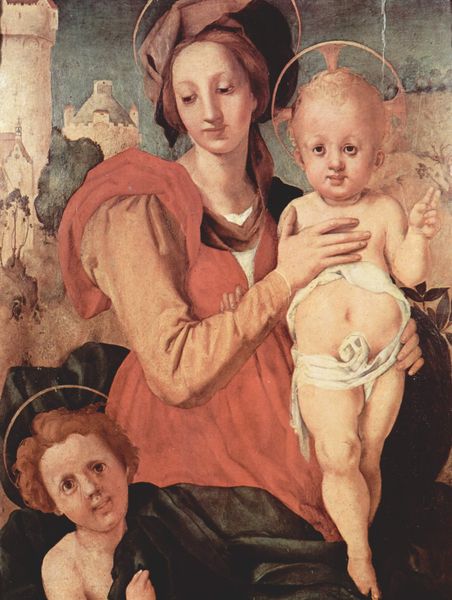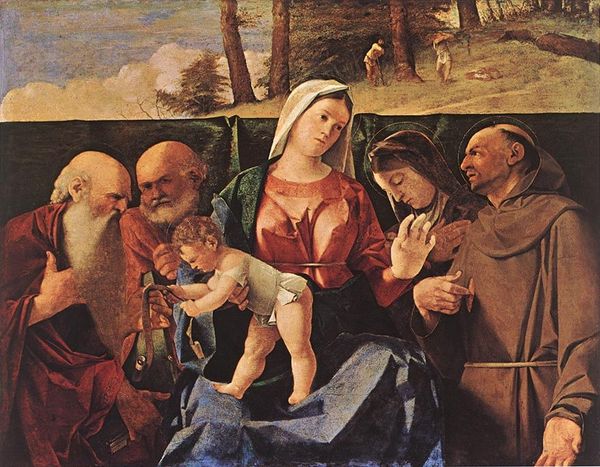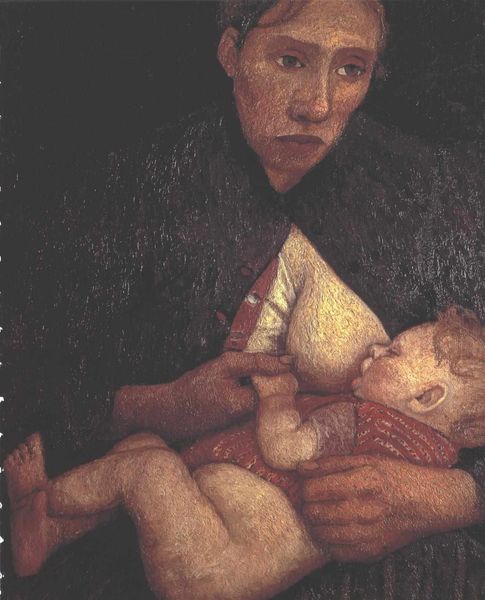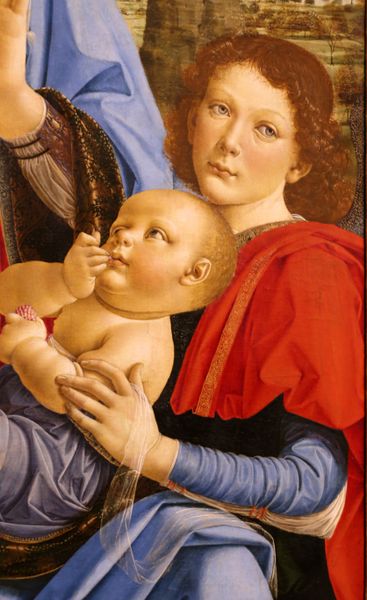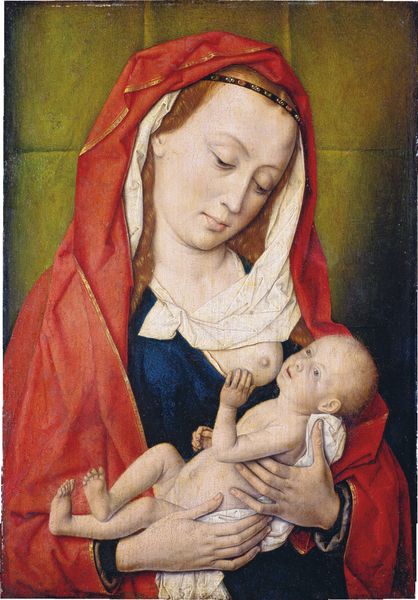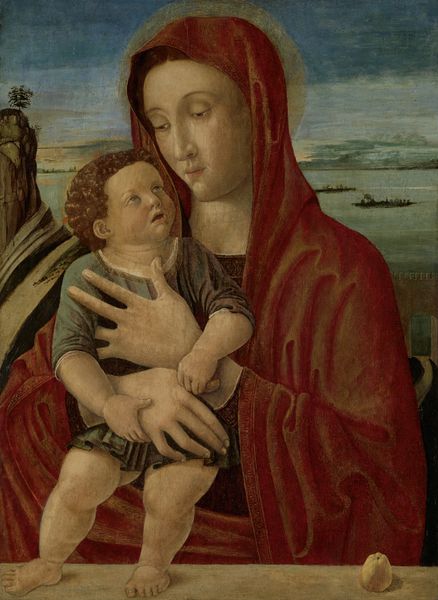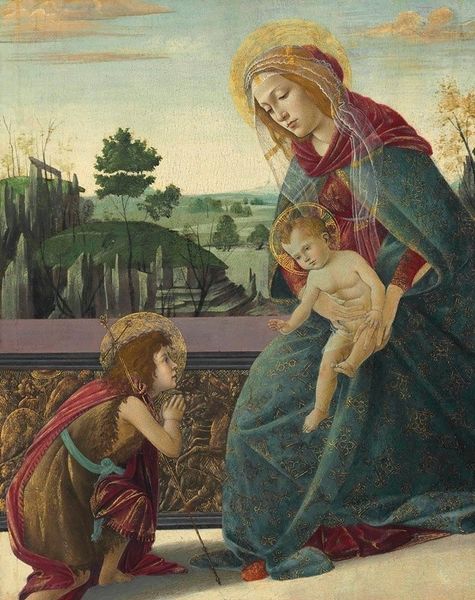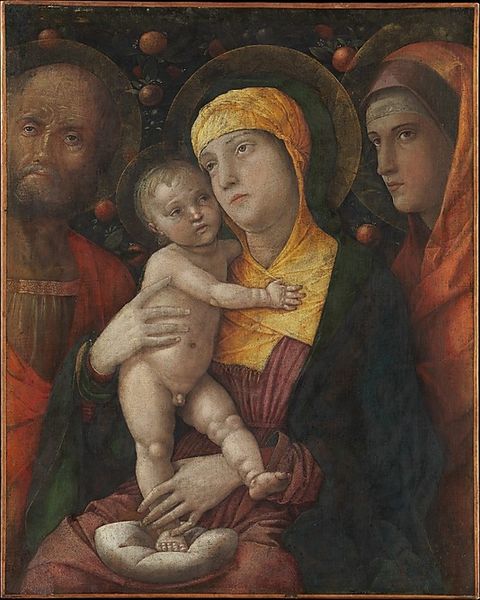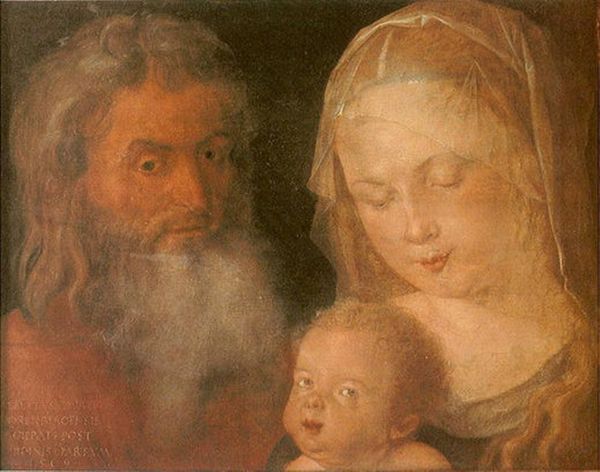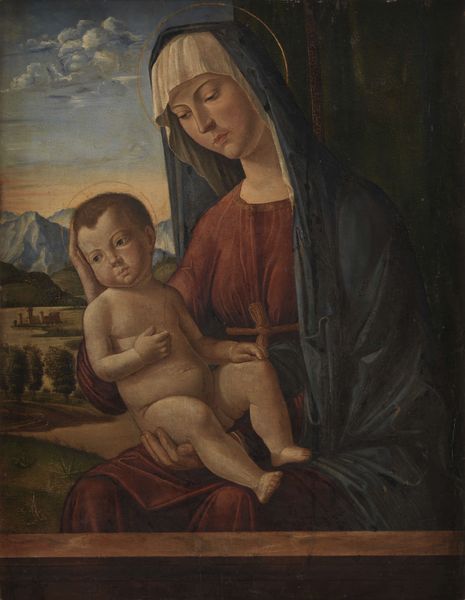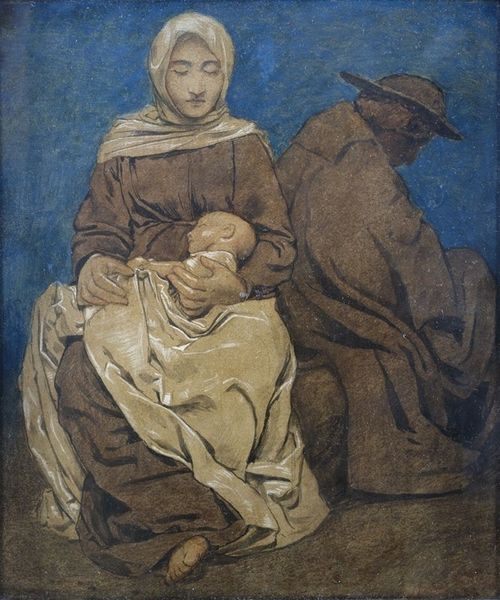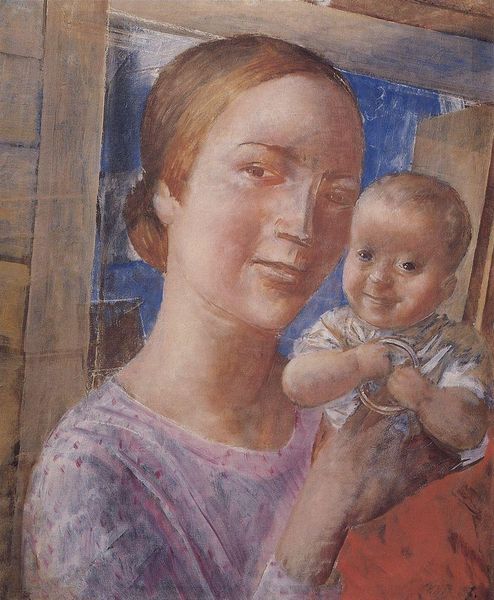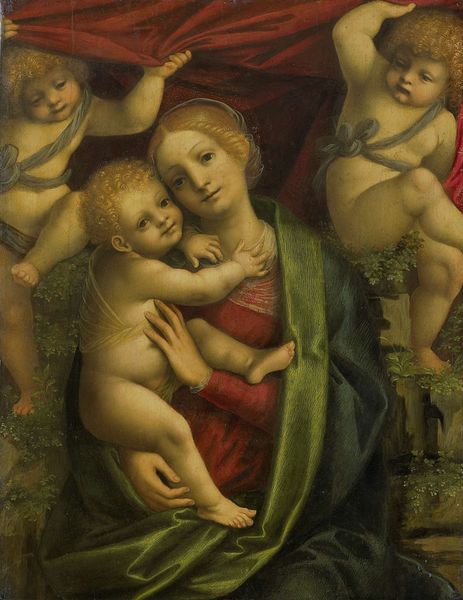
painting, oil-paint
#
portrait
#
painting
#
oil-paint
#
figuration
#
oil painting
#
russian-avant-garde
#
genre-painting
#
realism
Copyright: Public domain
Curator: Seeing this now, I’m struck by the painting's tender stillness. It feels like a breath held in time, a moment of profound connection. Editor: Indeed. What we have here is Kuzma Petrov-Vodkin’s "Motherhood," an oil painting created in 1925. This artwork offers a glimpse into the domestic sphere amidst the revolutionary fervor of the Russian Avant-Garde. Curator: Revolution… in the midst of such intimacy? That’s interesting. It feels almost sacrilegious to discuss societal upheaval when confronted with this shared gaze. It seems so deliberately inward, and there’s a sort of roundness to the forms, an encompassing embrace, a kind of visual prayer. Editor: The work exists within a very specific historical context, challenging the traditional representation of motherhood. Instead of an idealized Madonna, we see working-class women, rendered with a post-revolutionary sensibility. It draws from realism and figuration, but departs from pure, sentimental portrayals of its time. Look at the way Petrov-Vodkin disrupts expected hierarchies, presenting a version of caregiving that's grounded, almost severe in its simplicity. Curator: "Severe" is a striking word choice. The tones feel muted and earthen, but I also see something hopeful here. Maybe it's how the red cloth envelops the child— a dash of defiant colour, maybe even a kind of radical softness. It brings forth the hope that through revolutionary struggle, something good will emerge, some care, tenderness will thrive and even grow from it all. Editor: Right. The red cloth, for instance, resonates with both protection and, undoubtedly, echoes the sociopolitical rhetoric of the era. It’s both womb-like and symbolically charged, creating a dialogue about the mother’s dual role: nurturer and participant in a changing world. Also, don’t you feel a bit suffocated by it? Curator: Suffocated? Not exactly. Grounded, maybe. Though maybe “suffocated” also hits upon something real – the weight of care and expectations. Is that other figure the mother of the older one? Another support network to bear the brunt? Editor: Yes, one could consider that, particularly given how it invites discussion around communal living during the interwar. But, considering our own times and intersectional viewpoints, the artwork resonates deeply with issues of female identity, class struggle, and how caregiving roles are shaped and influenced by both patriarchal systems and larger economic forces. Curator: I’ll carry with me a refreshed view, the push and pull of these ideas now interlaced like the layers in this very piece of art, echoing perhaps the multiple, sometimes contradictory emotions that exist in those quieter moments of motherhood. Editor: Absolutely. A rich artwork, capable of prompting contemplation about caregiving's complexities during profound cultural transformations, with deep echoes in our modern experiences.
Comments
No comments
Be the first to comment and join the conversation on the ultimate creative platform.
